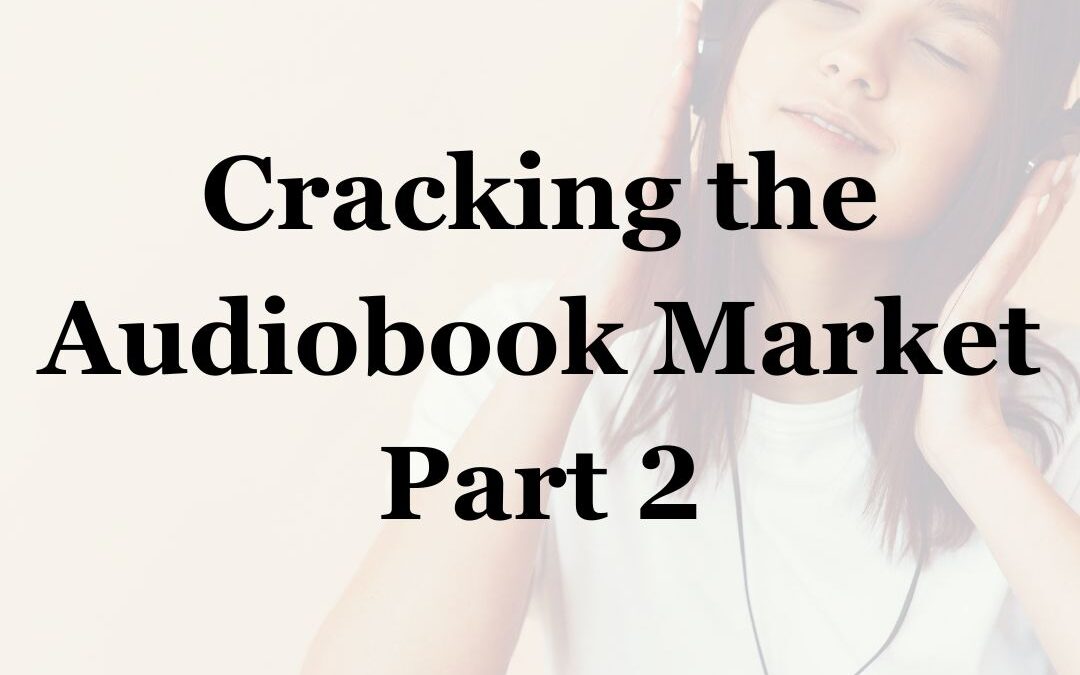From Text to Speech: How a Manuscript Becomes an Audiobook

In Part 1, I laid out the case for getting into audiobooks and for doing it sooner rather than later. Now we’ll look at how every book goes from print to audio. Whether you hire a full service company, produce everything yourself, or go hybrid; the generic process of getting the printed words to speech is the same. Don’t let this list scare you off. I’ll talk about who can help do each step in Part 3. Here are the steps:
Make sure you own the audio rights to your book. If you’re an indie/self-publisher, you automatically own your audio rights. It can be more complicated if you are published with a small or more specialized publisher. You need to look at your contract carefully. If you own the rights, great! If the publisher owns the rights, make sure they put out the audiobook or revert the rights to you. If you have a contract with a big traditional publisher, they almost always take the rights to audio and produce the auidobook. If they don’t, again, ask them to put out the audiobook or revert the rights to you.
Prep the manuscript. No matter who produces the audiobook, the author almost always preps the manuscript for recording. Even if the publishers handle everything else, you will want to do this task. Nobody knows your book like you and all the pre-help you can provide to the narrator (even if it’s you), the better, faster, and cheaper you make the process. Prepping the manuscript involves reading through the whole book to make sure there are no missing or extra words or confusing homonyms. This is the time to make any last-minute deletions or corrections that make the manuscript better and easier to read aloud. In addition, you should put together a pronouncer for weird names and places or foreign words. Not all parts of the book get recorded, so you should indicate what you want done with charts, genealogies, indices, etc. Some distributors will allow PDFs of deleted material. You should plan for any deleted print material to also be distributed on your website as a “bonus” or “extra.”
Recording: The actual process of someone speaking the text into a microphone and recording the sound. Anyone with a phone these days knows how to do this. I’ll discuss how to make the decision on who should narrate in Part 3.
Editing. No one gets it perfect 100% of the time. As the narrator is recording, they may miss a word, add something, pronounce it wrong, etc. There may be coughs, stomach gurgles, a dog barking in the background. If caught during the recording, the narrator repeats the text correctly. It’s the editor’s job to take out the errors and repeats and flag anything they can’t repair for the narrator to re-record.
Quality Control (QC). Once the editor thinks they have it perfect and has a list for the narrator’s re-record, the recording goes to a second pair of ears for QC. I’ll discuss who this should be in Part 3. The QC person listens to the recording and compares it to the text. They make sure to catch anything the editor missed and add to the list for re-records. If the editor cannot make the changes necessary, the narrator is called in redo some sections.
Re-record. The narrator makes the corrections flagged by the editor/QC. After that the recording goes back to editing and quality control to see if the changes are correct. Hopefully no more re-records are needed, but you never know. You do as many rounds of record-edit-QC as needed to get it right. Here’s where good prepping the manuscript can save lots of time and money.
Mastering is the final technical part. The editor makes sure that the recorded files meet the technical specifications for all your distributors. This is the part that worries non-tech writer-producers the most, but is easily done with a variety of tools on-line.
Submit files for distribution. The act of setting up accounts with distributors and delivering the files and required documentation for royalty payments, etc. I’ll discuss the factors in deciding whether to go narrow by distributing through Audible only or going wide with many distributors in Part 5. You also have to deliver a new square cover for your audiobook that meets the distributor’s requirements. This is probably a throwback to the days of CD jewel cases, but no one has changed it in the age of streaming. (Just like we keep “dialing” our phones.)
Marketing – helping customers find your book – is the final step, but there’s good news here. If you’re marketing to your eBook and paperback it spills over to the audiobook. I’ll discuss marketing strategies in Part 6.
That’s the generic journey. All manuscripts should go through those steps to become an audiobook. But within that journey the author has considerable leeway about who does which step. You can assign/sell rights to an audio book publisher. You can hire a full service audio production company. You can DIY or some sort of hybrid. I’ll walk you through the pros and cons of each path in the next post: “Four Routes to the Audiobook Market.”
Faith L. Justice has ten books out in audio. She learned these lessons the hard way so you don’t have to. This series of posts is an expanded text version of a presentation she made to the New York City Chapter of the Historical Novel Society. The original video is here.
